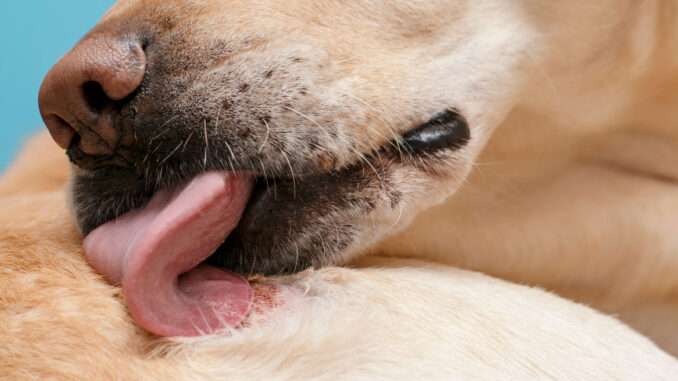
This article was updated on November 23rd, 2023
One of the biggest challenges to heal a dog’s wound is the dog itself! Dogs are notorious for wanting to lick and chew at their wound as it heals, and this can cause a range of issues.
As vets and owners, we need to work hard to prevent dogs from damaging healing wounds, to ensure they heal quickly and to help prevent infection. In this article, we will review 7 tips and home remedies that should do the trick.
Why you should prevent your dog from licking its wounds
Some studies have shown that saliva does encourage healing in some situations. However, the obsessive manner in which dogs lick mean that any benefits the saliva potentially offers are soon negated as the healing tissue is broken down.
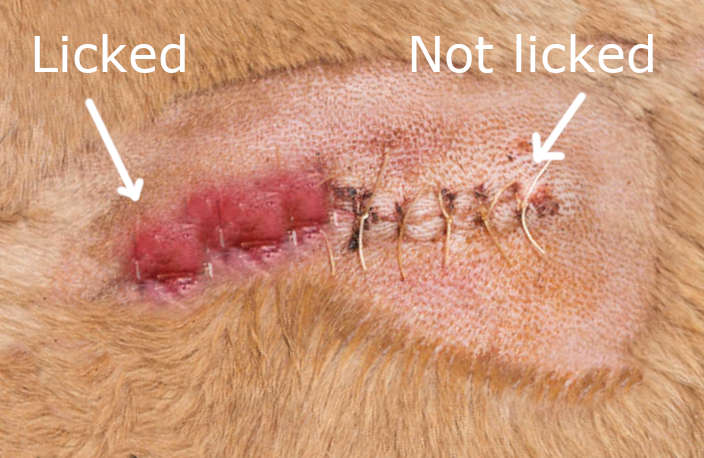
Most dogs also have a high level of bacteria in their mouth, especially those with dental disease. With 80-90% of dogs over the age of 3 having some degree of periodontal disease, chances are high your dog does too. So, let’s now review the 7 best tricks to stop your dog from licking their wound or incision, while helping them recover as fast as possible.
7 best tricks
1. A cone or Ecollar
Possibly the best way to prevent licking 24/7 is to have a cone on our pet. While they can look a little comical, they are incredibly effective. There are a range of types, including those that are plastic, foam, inflatable and a soft fabric material. The plastic ones are the cheapest but can be the most uncomfortable.
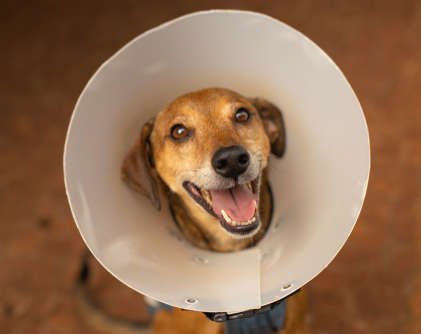
Dogs are perfectly capable of exercising, eating and sleeping while wearing their cones so do not be tempted to take it off, as this is when your dog will try and lick.
2. Pet t-shirt.
Depending on the location of the wound, a pet t-shirt may be appropriate. These work particularly well for females who have recently been spayed. They stay on nicely and should not irritate the wound when properly fitted. If a wound is infected, we would not put a pet t-shirt on top, as this reduces ventilation.
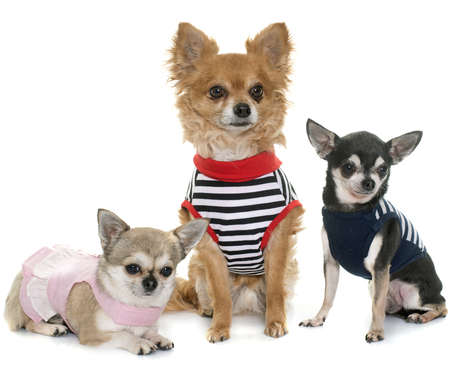
3. Dressings where appropriate
Some wounds can be covered with a bandage or dressing by a vet. This can work well when the wound is clear and dry and not in an awkward place like the head or tail. Keep in mind, it is not always wise to bandage infected wounds, as this can worsen the infection.
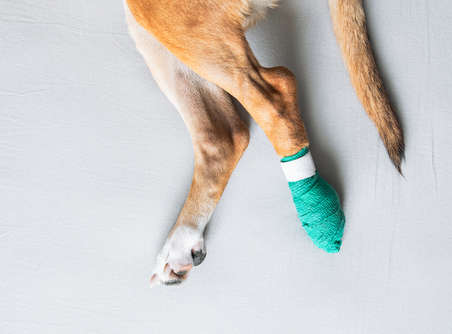
4. Bitter sprays.
These sprays are generally designed to be put over dressings, to prevent the dressing being licked or chewed off. This works well for dressings on surgical wounds, such as after a lump removal or neutering.
- PROTECTS & SOOTHES - Protects and soothes minor wounds.
5. Distraction
As well as the methods above, set your dog up for success by distracting them from their wound. If they’re inside with nothing to do, they’ll soon try and lick that wound. Distraction can include things like socializing with other dogs, training and exercise. Just remember to stick to your vet’s post-op healing instructions and don’t overdo it.
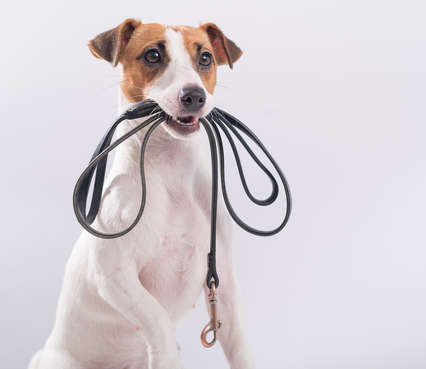
6. Food puzzles
Food puzzles like chews and lick mats are a great idea. This is because they offer a distraction, but also provide your dog an opportunity to fulfil their desire to lick. We recommend the Outward Hound puzzles, such as this one:
- Level 2 Intermediate dog puzzle – a great way to introduce treat games to pets who have little to no experience while still providing an interactive challenge for smart dogs
7. Control of pain and infection
If a dog is provided with adequate pain relief and anti inflammatories and the right antibiotics (if needed), they should feel more comfortable and will have less desire to lick their wound.
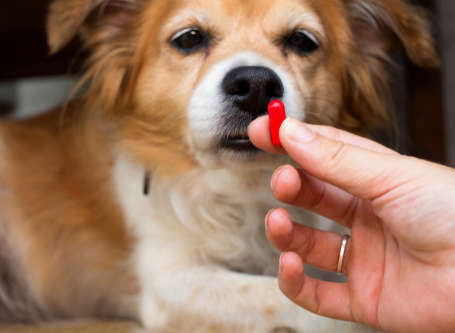
How long should I keep my dog from licking its wound?
An owner needs to prevent licking until the wound is completely healed. This can take a couple of weeks. An E collar should not be removed until the desire to lick has gone.
Risks and consequences of wound licking by dogs
The most common risks associated with wound licking include:
• Wound breakdown and opening up of the closed wound
• Removal of sutures
• Delayed healing and scab formation
• Introduction of infection
• Spread of infection to the surrounding skin
• More swelling, redness and pain
Why do dogs lick their wounds or incisions?
Most dogs have an innate desire to lick their wounds and it is something they feel compelled to do. It is for this reason that it can be such a hard thing to prevent.
We know that animals in the wild will lick their wounds to remove dirt and debris. However, we must remember that our pet dogs live in much cleaner environments and have access to medication and vet care, so this is no longer needed.
Some factors that can contribute to a desire to lick at a wound include:
• Localized pain. If a dog is not receiving adequate pain relief, their wound could cause them a great deal of discomfort. Some dogs attempt to address this by licking at the wound. While they may find this comforting, their licking will actually lead to more swelling, redness and pain.
• Itchiness. A healing wound is an itchy wound! This is especially true as the scab forms and the fur starts to grow back. Those who have had their fur clipped can also have clipper rash and associated itching.
• Anxiety. Dogs who have experienced a recent trauma or who find their wound uncomfortable may lick in order to soothe themselves and reduce anxiety. Compulsive licking is a bad habit that some dogs develop.
• Discharge. If the wound is infected and oozing, a dog will instinctively try to keep it clean by licking up any discharge.
Frequently Asked Questions
Can I use human medications on my dog’s wound?
No, it is not advised to use any human medication for your dog. It might not be effective and some are even toxic. Talk to your vet about the most appropriate medicine for your pet.
How effective is an E collar?
When used correctly and well-fitted, E collars work incredibly well. They mean a dog cannot physically lick the wound, particularly when not being supervised by their owner, such as at night time. However, some dogs do use the edge of the collar to scratch at an itchy wound. In these instances, stick to softer cone options.
Related posts:
Disclaimer: This website's content is not a substitute for veterinary care. Always consult with your veterinarian for healthcare decisions. Read More.




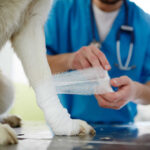
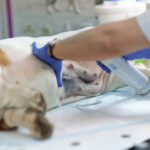

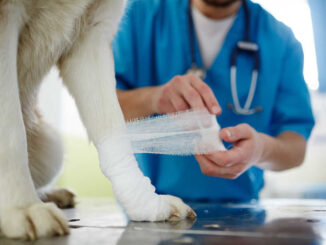
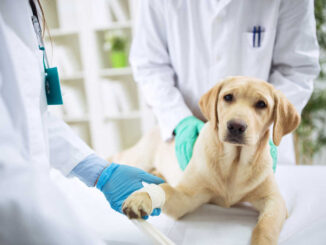
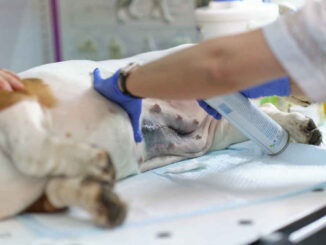
Be the first to comment